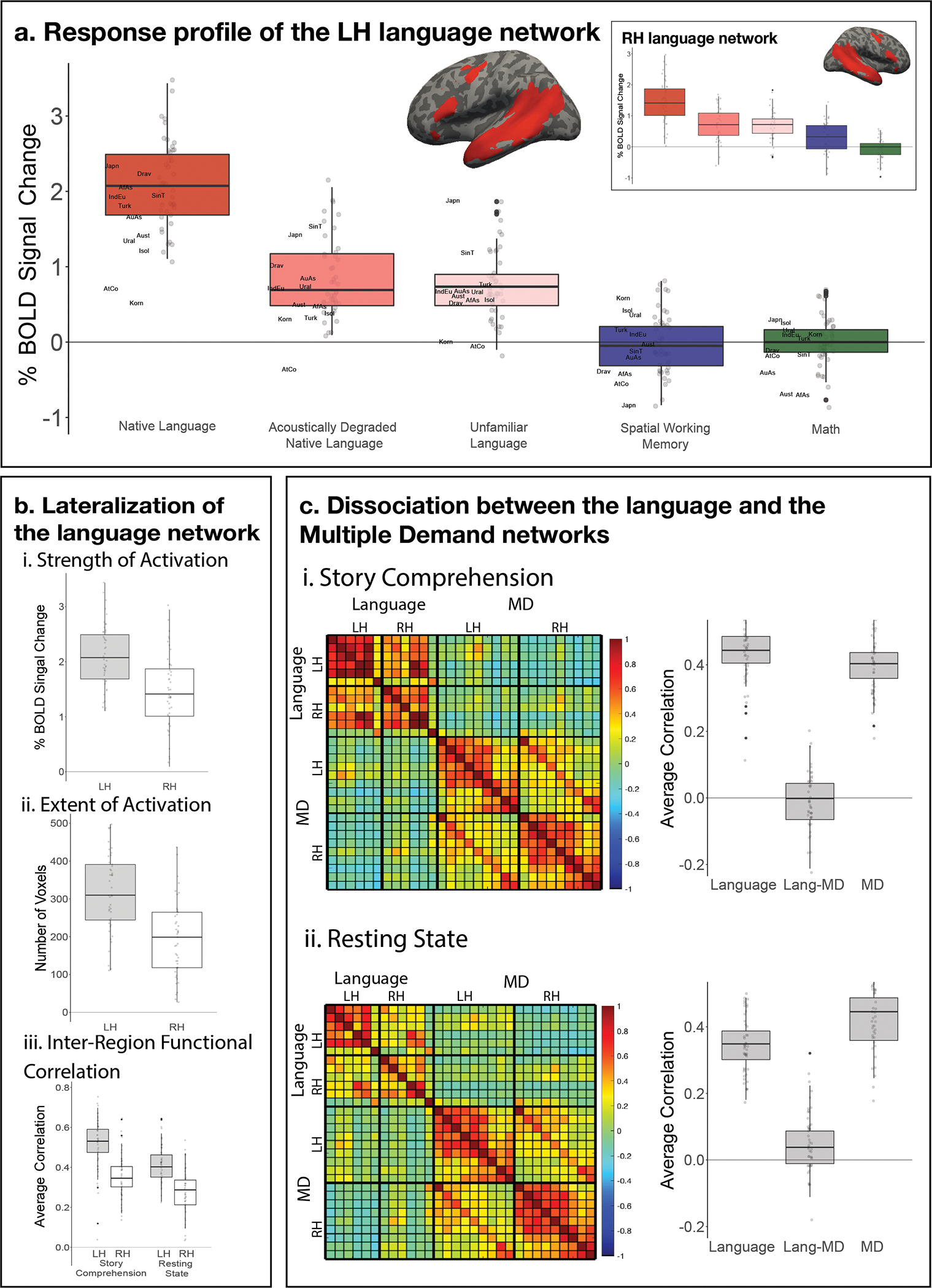Figure 3.

a) Percent BOLD signal change across the LH language functional ROIs (see inset for the RH language fROIs) for the three language conditions of the Alice localizer task (Native language, Acoustically degraded native language, and Unfamiliar language), the spatial working memory (WM) task, and the math task. The language fROIs show robust functional selectivity for language processing. Here and in the other panels, the dots correspond to languages (n=45 in all panels), and the labels mark the averages for each language family (n=12; AfAs=Afro-Asiatic, AuAs=Austro-Asiatic, Aust=Austronesian, Drav=Dravidian, IndEu=Indo-European, Japn=Japonic, Korn=Koreanic, AtCo=Atlantic-Congo, SinT=Sino-Tibetan, Turk=Turkic, Ural=Uralic, Isol=Isolate). Here and in other panels, box plots include the first quartile (lower hinge), third quartile (upper hinge), and median (central line); upper and lower whiskers extend from the hinges to the largest value no further than 1.5 times the inter-quartile range; darker-colored dots correspond to outlier data points. For each statistical comparison reported in the text, a two-tailed t-test was used (see Suppl. Table 2 for results of linear mixed effects models); no correction for the number of comparisons was applied (because each test addressed a distinct question). b) Three measures that reflect LH lateralization of the language network: i-strength of activation (effect sizes for the Native-language>Degraded-language contrast); ii-extent of activation (number of voxels within the union of the language parcels at a fixed threshold for the Native-language>Degraded-language contrast; a whole-brain version of this analysis yielded a similar result: t(44)=5.79, p<0.001); and iii-inter-region functional correlations during two naturalistic cognition paradigms (i-story comprehension in the participant’s native language; ii-resting state). The LH language network shows greater selectivity for language processing relative to a control condition, is more spatially extensive, and is more strongly functionally integrated than the RH language network. c) Inter-region functional correlations for the LH and RH language network and the Multiple Demand (MD) network during two naturalistic cognition paradigms (i-story comprehension in the participant’s native language; ii-resting state). The language and the MD networks are each strongly functionally integrated but are robustly dissociated from each other (pairs of fROIs straddling network boundaries show little/no correlated activity).
